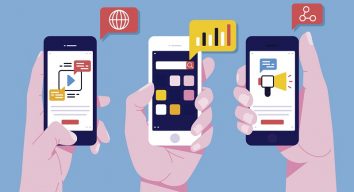From almost the moment that Steve Jobs introduced it to the world, Apple was billing the iPad as a genuine laptop replacement for many people. The reality of that situation, however, told a slightly different story. The mobile operating system that all iPads ran on was essentially a slightly modified version of iOS, which powers the company’s line of iPhone and iPod Touch mobile devices. This, for all intents and purposes, made the iPad just a modestly bigger iPhone for many years. You could still get a lot done with it and casual users found a lot to work with… but for power users and professionals alike, this left a lot to be desired.
Until 2019, of course.
In September of 2019, Apple took the step of releasing iPadOS 13 – the successor to iOS 12 and perhaps the first true tablet-based operating system in the organization’s history. Visually speaking, it shares a lot in common with its predecessors. But under the hood, thanks to its greater emphasis on multitasking and other features, it has turned the iPad into a true mobile powerhouse for the first time. It also brings with it a number of clear implications for the future of mobile app development that you’ll need to be aware of moving forward.
The Arrival of iPadOS and the Future of Mobile App Development
Maybe the biggest shift that iPadOS will bring to mobile app development involves a major shift in thinking on behalf of software publishers. Again, with the way the iPad’s mobile operating system used to be set up, users had essentially one way of actually interacting with the device – as if it were just an iPhone with a larger screen.
Today, however, iPadOS offers features like Slide Over and Split View that make it possible to not only interact with different applications at the same time, but to launch multiple iterations of the same app as well. This will bring with it a major change to “universal apps” – meaning those that you intend to launch on the iPad and the iPhone simultaneously. You can no longer make simple modifications to the code to take advantage of that larger screen real estate. You also need to adjust your app to account for the many different ways that people can now use it, and the new workflows that they’re going to develop as a result.
Dragging an app to the left or right of the screen can now create a Split View, for example. If a user drags the icon for an app from the dock to overtop of the current app, it creates a floating window called Slide Over. With regards to the types of rich content that may be included in your apps like videos, they can now be easily shrunk down into a type of “picture-in-picture” window that allows the user to continue to consume that content while they still interact with other apps.
In other words, iPadOS has essentially allowed the iPad to become what it was always meant to be: a stop-gap solution in between a smaller smartphone and a larger laptop computer. The advent of mobile computing required its own shift in thinking in terms of what apps designed for these platforms could be. Now, for the iPad in particular, developers will essentially need to “un-learn” a lot of those best practices in favor of the new rules of the brave new world we’re living in. Yes, this will be a challenge – but now that the iPad offers these features users will absolutely expect to be able to take full advantage of them.
Those developers who recognize this and provide those features – and design apps that are optimized to lean into them instead of shy away from them – will find incredible success. Those who don’t will find themselves quickly left behind by those competitors who are able to adapt once again to the break-neck pace at which technology continues to advance.
Contact us today to discuss custom software development for your company!






